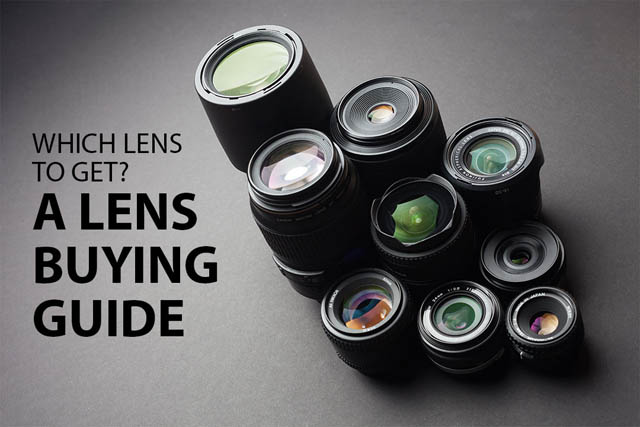Which Lens to get? A Lens Buying Guide
If you have an interchangeable lens camera and you're interested in capturing photos that are more than simple snapshots, then there will likely come a time when you want to purchase a new lens for your camera. Although some photographers seem to always be obsessed with the latest and greatest camera bodies, in most cases a new lens will do much more for your photography than a camera body will.
The problem can come in choosing a lens - there are so many different lenses to choose from. Different focal lengths, zooms, and fixed focal length lenses, with and without image stabilization, and at many different price points. In this article I'll look at the different features you should consider when looking at a lens, and how to decide which lens is best for you.
Identify what you want from the lens
The first thing to think about when considering the purchase of a new lens, is what is it that your current gear doesn't do that you need? For example, it could be that you'd like to photograph wildlife, but your current lens isn't long enough to get you frame-filling shots.
Maybe you photograph in low light situations, but have problems with blurry shots due to the lack of light. Or you like to take portraits but can't get the background as out of focus and blurry as you'd like. When you've identified the issues with your current gear, this will help you greatly in identifying the features you really need in your next lens.
As well as the issues with your current gear, think about what you like about it too. For example, if you always use autofocus with your current lens(es), then it would probably be a good idea for your next lens to feature autofocus too. If your current lens is a zoom, and you're always zooming it, then maybe your next lens should be a zoom too.
You can always test out whether you really need these features by disabling them with your current gear and see how you fare. Try shooting in manual focus for a day, or setting your zoom at a single zoom setting and not changing it at all. If you find it annoying, then you know that that feature really is important to you. If not, then you know that it is something you can live without. You might even find the lack of a feature actually spurs you on creatively.
Prime or zoom
A prime lens refers to a lens with a single, fixed focal length. A zoom lens refers to a lens that covers a range of focal lengths. Neither is 'better' than the other, it depends on what you need from a lens.
A zoom allows you to change the field of view by zooming in or out, while a prime lens always has a fixed field of view. This affects how you can frame an image - with a zoom you can get closer and zoom out, or move back and zoom in. With a prime you can't do this without changing the size of your subject within the shot.
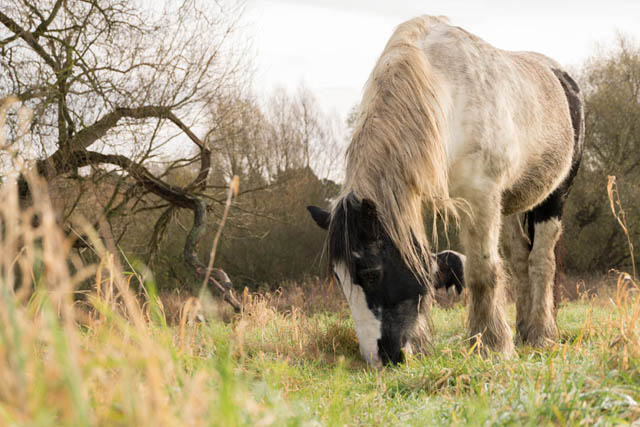
Zoomed in and standing back from the subject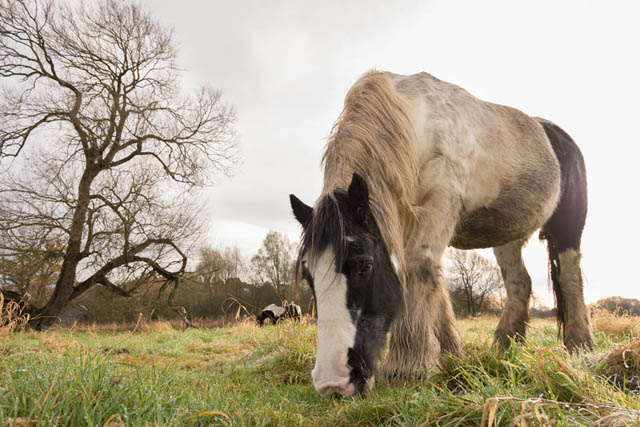
Zoomed out and standing close to the subject - note the difference in perspective / size of items in the backgroundA zoom lens will typically be smaller and lighter than two prime lenses that only cover the minimum and maximum focal lengths of the zoom. It will also very likely be cheaper.
With prime lenses, if you want to use a different focal length, then you have to change the lens. With a zoom lens you just zoom it. The zoom lens is faster, more convenient, and better suited to dusty and wet climates where changing a lens could let dust or moisture into the camera body.
Prime lenses often have much faster apertures than zoom lenses. This allows you to shoot in lower light and defocus the background more.
Prime lenses are often sharper and better corrected for distortion than zoom lenses.
A single prime lens, especially one with a 'pancake' design will likely be quite a bit smaller and lighter than a zoom lens. This can help make your camera less noticeable and less intimidating, useful for things like street photography. Or if you just don't want to carry as much weight.
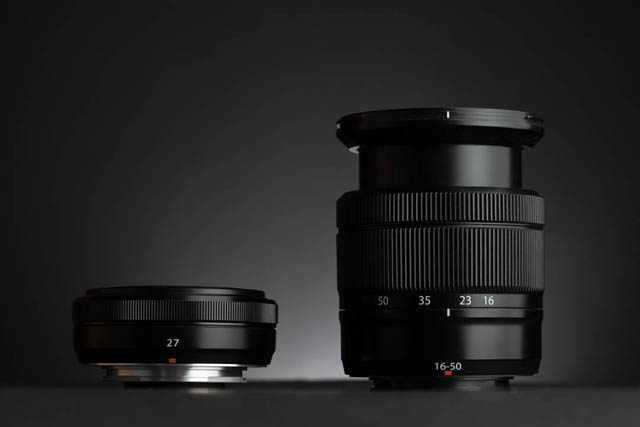
Size of a pancake prime lens (left) compared to a zoom lens (right) zoomed to approximately the same focal length as the pancake lens.
Maximum Aperture
The maximum aperture of a lens determines how much light the lens lets in and also how much control it will give you over depth of field (how out of focus you can make the background). It is usually given as part of the lens name.
For example, a zoom lens might be described as a 18-55mm f/3.5-5.6. This means the lens has a maximum aperture of f/3.5 at 18mm and a maximum aperture of f/5.6 at 55mm.
With apertures, the lower the number, the more light the lens can let through, and the shallower depth of field you can achieve. As mentioned earlier, prime lenses often have a much larger maximum aperture than zoom lenses. While a zoom lens might be f/5.6 when zoomed to 50mm, a 50mm prime lens might have a maximum aperture of f/1.8. This makes it much more suited for low light work, or where you want a shallow depth of field with the background blurred away.
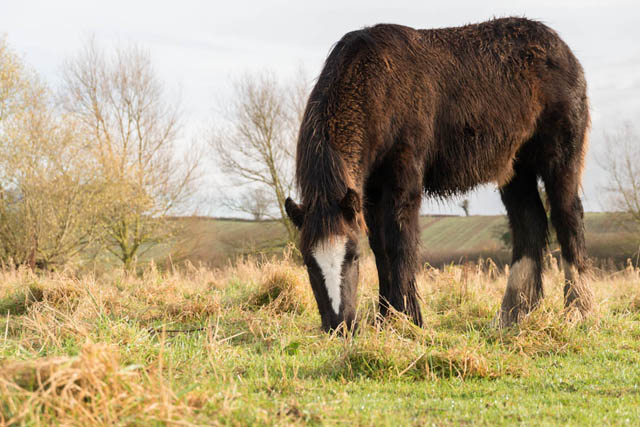
Standard kit zoom lens zoomed to 50mm with the aperture fully opened up (f/5.6)
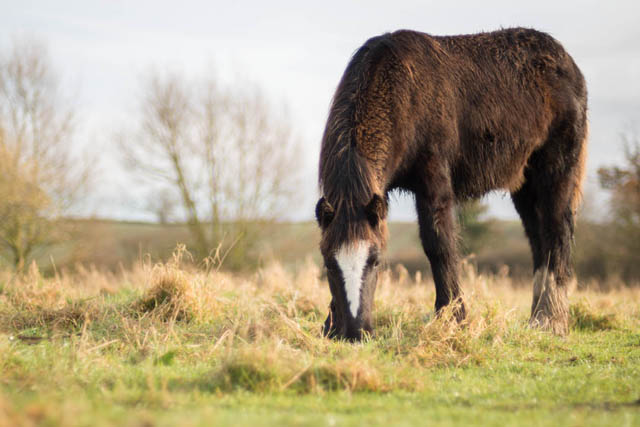
50mm prime lens with the aperture fully opened up (f/1.4)
The larger the maximum aperture, the larger, heavier, and more expensive the lens will be. For example, at the time of writing, Amazon has the Canon 50mm f/1.2 lens listed at $1,549. The f/1.4 version is listed at $399. While the f/1.8 version is only $125. So you really need to decide just how important a large maximum aperture is to you, and how much you're willing to pay for it.
Image Stabilization
Image stabilization is useful if you like to do your photography handheld (without a tripod) and sometimes shoot in low light situations that require a relatively low shutter speed. The stabilization helps you get sharp shots in situations when you'd normally get blur from camera shake.
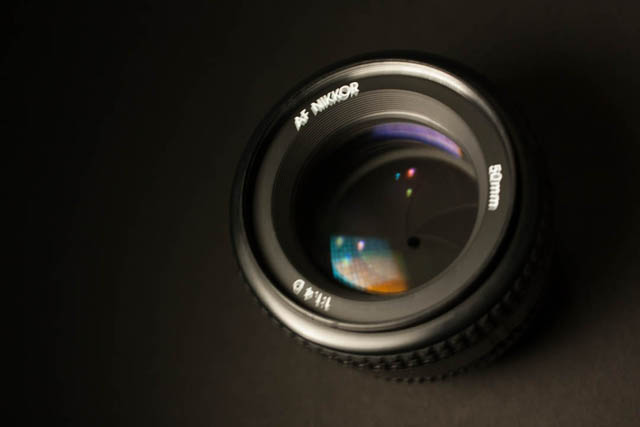
Without image stabilization, photos at slow shutter speeds can be blurry due to camera shake when shooting handheld
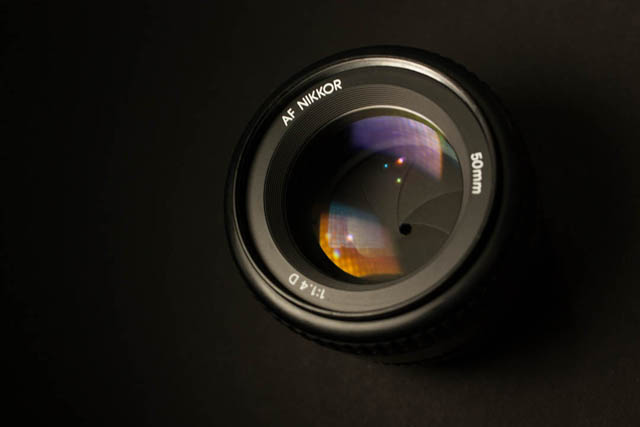
With image stabilization on, there is virtually no blur caused by camera shake
Different manufacturers give this different names - Image Stabilization, Optical Stabilization, Vibration Compensation, Vibration Reduction, Optical Image Stabilization - they're all the same thing really. Note that some camera bodies from Olympus and Sony feature this built into the camera, and so any lens used on these bodies will be stabilized, whether the lens offers it or not.
Most systems offer around 3 stops of benefit. This means you can shoot at a shutter speed 3 times slower than the minimum speed you'd normally need to get a sharp shot. It won't help if you're photographing a moving subject, but when the potential blur comes from camera shake it can provide a noticeable improvement.
Size and weight
The size and weight is not usually a headline feature of a lens. Often these details are tucked away in the detailed specifications. But they can make a big difference to many people. If you're looking for a general purpose walk-around lens, then you probably don't want a lens that is large and heavy to hang from your neck all day. If you're working in a studio, or you're after the absolute in image quality, then the size and weight may not be such an issue for you.
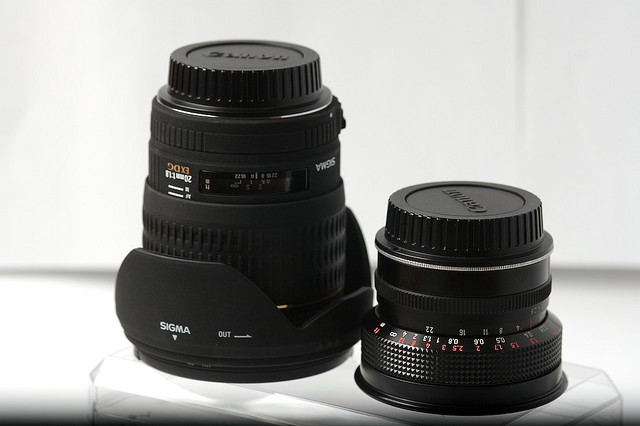
20mm Duel - Sigma vs. Flektogon by Ivailo Djilianov on Flickr (licensed CC-BY-SA)
It's no good if you purchase a lens only to find that you always leave it at home because it's too large and heavy. So definitely consider this point. See what other people doing similar photography to you have to say about it. If you have any doubts about it, try handling one before you decide to purchase.
Filters
If you are looking to purchase a lens that you intend to use with filters, then look very carefully at the filter thread size. If you already have a set of filters for lenses you currently own, then ideally any new lens should have the same size (or smaller) filter thread as your existing lens(es). This will enable you to use the same filters you already have on your new lens.
The larger the filter thread size, the more expensive the filters are. If you already have a set of 67 mm filters you use, but the new lens you're looking at takes 82 mm filters, it's going to cost quite a lot to buy a new set of filters in that size.
If a lens you're looking at has a smaller filter thread size than your current lenses, then you can use step-up rings to mount the filters. However, bear in mind that when you use large filters with step-up rings on a small lens, it can make it look much larger than it would with the correct size filter.
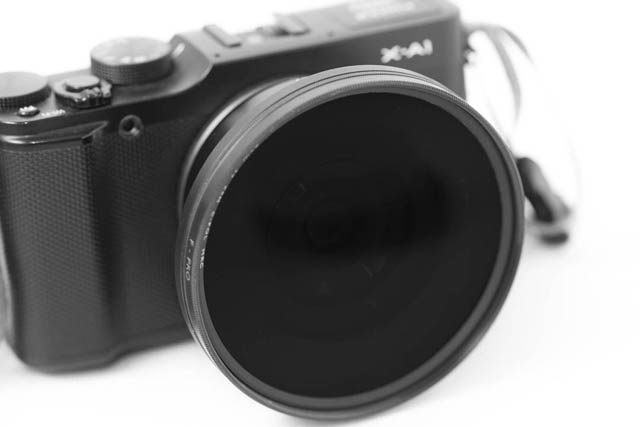
Camera with a small pancake lens attached but then a large filter attached to it using step-up rings
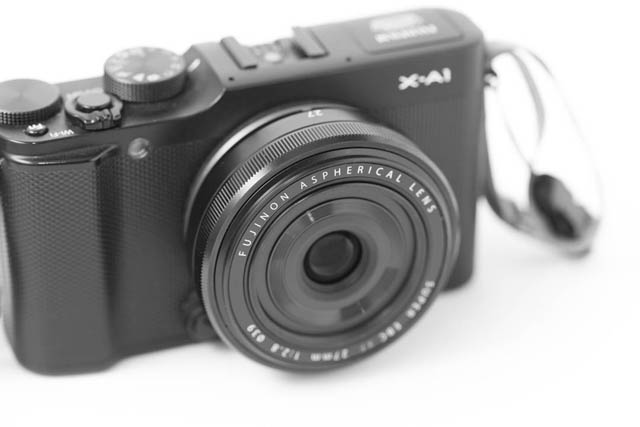
Camera with a small pancake lens attached and no filter
Some lenses, especially ultra-wide angle lenses, don't even have a filter thread. Usually this can be worked around, but it does require the use of an extra adapter kit. The very large filters needed for these lenses can be very expensive too, so you should factor this into the price when looking at lenses.
Video use
Another thing to consider is if you will want to use the lens for video work with your camera. While all lenses that work for stills will also work for video, there are certain things that make some lenses more suited for video than others.
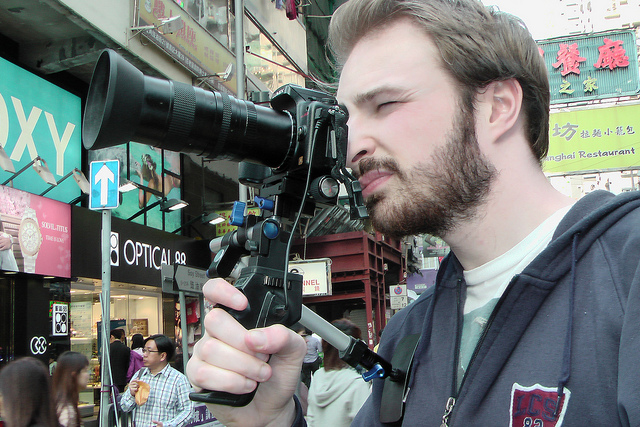
TACTICAL RIG by Edwin Lee on Flickr (licensed CC-BY-ND)
If you will be using autofocus with video, some lenses feature stepping motors for autofocus, which are better suited to video work than other types of motors. When you check the description of a lens, if the lens contains an autofocus motor suitable for video, then this will likely be pointed out.
Stepless aperture control is also useful for video. This allows you to stop down the lens' aperture in a smooth motion rather than in abrupt increments. Some people prefer working with an aperture ring on the lens to control the aperture, rather than using a control wheel on the camera. So you may also want to take a look at whether the lens includes an aperture ring (or ring that can be programmed to control aperture) too.
The focus throw of a lens can be important if you want to use manual focus with the lens. The throw refers to how much you have to turn the focus ring to go from the lens' closest focusing distance to infinity. The larger the throw, the easier the lens will be to focus precisely.
Will it upgrade with your camera?
Nikon, Canon and Sony all make cameras with two different image sensor sizes - full frame (around the same size as a frame of 35mm film) and APS-C (around 1.5x smaller). Some lenses are designed for full frame cameras, and these will also work on the smaller APS-C format cameras. But lenses designed specially for APS-C format cameras won't work fully on full frame cameras, as they only cover the smaller area of the APS-C sensor size.
With Canon, their lenses designed for APS-C cameras can't be used on their full frame cameras at all. With Sony and Nikon the lenses can be used, but you'll have to choose a crop mode that crops the image down to the same size as if it was taken with an APS-C sensor. This means that you won't get the benefit of the camera's maximum resolution.
For example, the Nikon D800 is a full frame 36 MP camera. But if you use it with a lens designed for an APS-C camera, and enable the mode to crop the image down to APS-C size, then the image resolution goes down to 15.36 MP. If you didn't enable the crop mode, then you'd end up with an image with very heavy vignetting.

DX Lens on FX Sensor by Nate Grigg on Flickr (licensed CC-BY)
So, if you currently own a camera with an APS-C sized sensor, but may want to upgrade to a camera with a full frame sensor in the future, then you should take this into account when looking at lenses. If you purchase a lens designed for full frame cameras, then you can use it on your current camera and a full frame camera when you upgrade. (Note that the field of view the lens gives will be wider on full frame though).
If you don't think you'll want to upgrade to full frame in the future, then there is no need to consider lenses designed for full frame cameras, unless there is no equivalent designed for APS-C cameras. Lenses designed for full frame cameras are typically larger, heavier, and not to mention more expensive, than their equivalents designed for cameras with APS-C sized sensors.
If you use Samsung, Pentax, Fuji, or m4/3, then you don't have to worry about this at all. These manufacturers all (currently) only use one sensor size in their cameras, and design their lenses for use with that particular size only.
Camera manufacturer branded or third party?
While all the camera manufacturers produce lenses for their cameras, there are also lenses available from a number of third parties. The biggest ones are Sigma, Tokina, and Tamron.
Some photographers decide to stick only with lenses produced by the manufacturer of their camera. However, it would be foolish not to at least consider the lenses produced by the third party manufacturers. Some of these lenses have no equivalent from the camera manufacturers, for example Sigma's 18-35mm f/1.8 zoom lens, or Tamron's 150-600mm super telephoto zoom lens.

Sigma's 18-35mm f/1.8 zoom lens is a good example of a popular third party lens for which there is no first party equivalent
In other cases the third party lenses duplicate lenses already available from the camera manufacturers, but they may be better quality or offer a slightly different feature set, or be cheaper. It is not that unusual for third party lenses to offer better image quality and be cheaper than the equivalent camera manufacturer branded lenses.

Sigma's 35mm f/1.4 lens is a good example of a third party lens that is cheaper and offers better image quality than the first party equivalents
However, it is not all plain sailing with third party lenses. Typically these manufacturers have to reverse engineer how to make their lenses 'talk' to the camera correctly. And when the camera manufacturer changes how their camera 'talks' to lenses, this can cause issues for these third party lenses. Recently this has happened with Sigma lenses not working on some new Nikon bodies.
When this does happen though, the third party lens manufacturers tend to be quite good at offering a free firmware update for the lens to fix the problem. But this does mean that you have to send your lens off or take it to a service center to get it fixed. (Or in the case of Sigma you could buy their USB Lens Dock, but that is an additional cost). With camera manufacturer branded lenses you don't have to worry about this issue at all.
Try before you buy
Particularly when you are considering the purchase of an expensive lens, it can be a good idea to try it before you decide to go ahead with the actual purchase. You may find that actually the lens is too heavy. Or maybe you don't use it as much as you thought you would. Or maybe the image quality isn't quite what you were looking for.
Some camera stores allow you to try a lens on your camera while you're there. This can give you a bit of a feel for how heavy it is, how it handles with your camera, and how the autofocus works. (Bear in mind when testing autofocus that most camera store are fairly dark and performance will likely be much better outdoors in daylight).
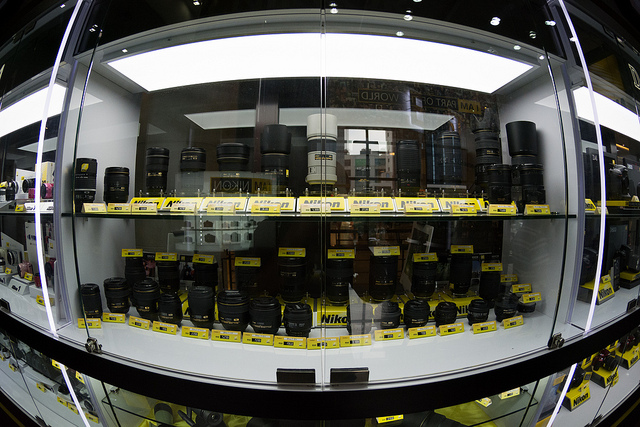
Nikkor Lens Showcase @ Berjaya Times Square's Nikon Centre by Vladimir K on Flickr (licensed CC-BY-SA) - the range of subjects when testing a lens in store is rather limited
To get a better feel of how useful a lens is though, the best solution may be to rent it for a few days. This lets you carry the lens round with you all day. You can find out whether the weight is a problem (or if it's a benefit if you're looking at replacing an existing lens with a lighter one). You can see how much you actually use it. And you can take plenty of 'real life' shots to see how it performs in the tasks you wanted it for.

flower_5639 by Brian Jelonek on Flickr (licensed CC-BY) - renting specialist lenses such as a macro lets you get a feel for how they useful they actually are for your photography
Renting does cost money, but in most cases it will work out cheaper than buying a lens then deciding it wasn't right choice and having to sell it second hand.
Image Quality
There are many aspects of image quality dependent on the lens, such as sharpness, micro contrast, distortion, and chromatic aberration. The majority of modern lenses do a pretty decent job, but it is worth reading a couple of reviews of a lens before buying just to make sure there aren't any image quality problems.
You should consider what you'll be using the lens for when evaluating image quality. For a portrait lens, does it matter if the image is a bit soft in the corners? You're probably not going to placing the subject's eyes in the corner of the image. Likely the corners will just be the out of focus background. And so softness may not be a problem.

Impressionistic Bokeh: Toronto Sakura. by kaybee07 on Flickr (licensed CC-BY) - bokeh (the way out of focus parts of an image are rendered) is an important aspect of image quality for some people
If you're looking at a lens for architectural photography, then you'll probably want to pay attention to distortion. If a lens has a complex distortion pattern that is difficult to correct, then it probably won't be a good lens for that particular job. As I said at the start of the article, work out what factors are important to you, then make sure the lens meets those needs.
Specialist and Vintage Lenses
Specialist lenses, such as fisheyes, macro, ultrawide, or even a LensBaby can be a great way to boost your creativity. Because they give a view quite different to what you are used to seeing with your camera, they are more likely to get you experimenting, working out how to get most out of them.
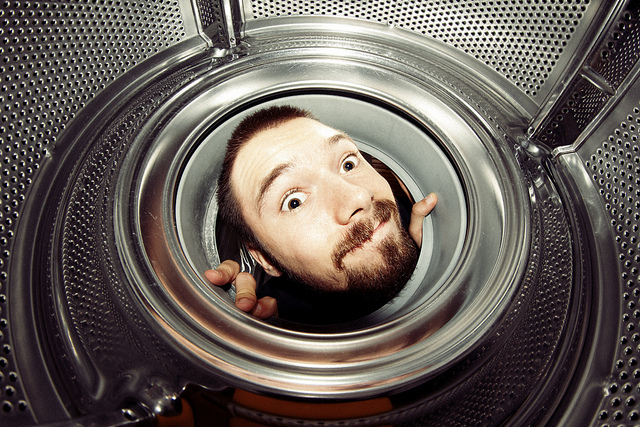
Fisheye Fun by 55Laney69 on Flickr (licensed CC-BY)
Vintage lenses can have a similar effect. Old lenses purchased on eBay or from a flea market can often give unusual effects that can be used creatively. You can even try experimenting with lenses not designed for use with cameras, such as enlarger lenses and projector lenses. Using these lenses you often feel more like you're allowed to play around and be creative than you can with a 'proper' lens. It's purely psychological, but if it gets you having fun and being creative with your photography, then that's the main point.
Buying Used
Many camera stores and websites sell used as well as new goods, and of course there's also classified ads and online auctions too. So, plenty of places where you can buy second hand lenses. Often you'll find that there can be quite a good discount compared to buying new.
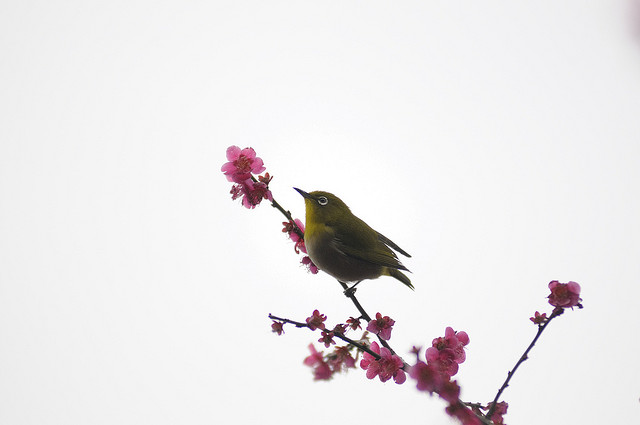
White-eye and Plum by trojan tron on Flickr (licensed CC-BY) - Older models of lenses that have been superseded (such as the Nikon 80-200mm f/2.8 used for this photo) can often be much cheaper than the current model while still giving great results
When buying from a reputable camera store or website you may find that they even include a warranty. The majority of lenses sold through classifieds and auction websites are sold without any issues. However, there are the odd scams or lenses that are sold as working but actually have some defect. You can read more about buying used camera gear in this article: Tips for buying cheaper cameras, lenses, and accessories.
Sometimes the price difference plus lack of warranty means that buying new is the better deal. Sometimes not. But it's certainly worth taking a look at second hand prices before you decide to purchase a new lens at retail price.
As I said at the start of the article, a good lens will often help your photography, and keep its value, much better than a new camera body will. So once you have bought into a camera system, you are usually better off saving up for a better lens than you are saving for a better camera body.
As with most things, you usually get what you pay for - good glass costs good money. However, absolute optical quality is not the main priority for most people. Most lenses today can produce high quality results. You just need to evaluate what the most important features are that you need to move your photography forward, and then this should help you make an informed decision of what lens to buy next.
